FIA World Rally Championship talks live OTT and remote production at 200km per hour
WRC has completely revamped the way it provides coverage of rallies over the last 12 months
FIA World Rally Championship (WRC) is a motorsport with a fast growing audience and increasing numbers of broadcasters taking up the mantel for rights, thanks to the promoter’s innovative take on live over the top (OTT) broadcasts and in-depth coverage of the season.
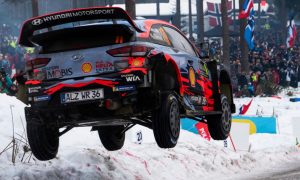
Is it a bird, is it a plane? No, it’s a rally car…
Alongside broadcast technology partners NEP and Tata Communications, which is the official supplier for WRC, the motorsport has completely revamped the way it provides coverage of rallies over the last 12 months. Additionally, it is looking to use remote production for its live coverage going forward.
Three-way car fight
WRC recently announced that its rally TV broadcast time hit a new record in 2018. The three-way fight between Sébastien Ogier, Thierry Neuville and Ott Tänak helped lift global airtime to 14,208 hours across last season’s 13 rounds, according to independent analyst Nielsen Sports. It is the first time the figure has topped 14,000 hours, climbing from almost 13,500 hours in 2017. The increase maintained the WRC’s consistent growth, which has seen broadcast time rise by more than 140% from 5,900 hours in 2013.
Speaking to SVG Europe about that growth, Florian Ruth, director of content and production at WRC, says: “Last season was just stunning; no one had any idea who the favourite was or who would win, and almost every manufacturer had a chance to win any rally. This made rally a very, very interesting motorsport.”
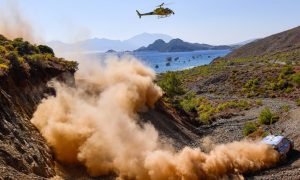
Whoosh!
Adding to the interest in the sport in 2018 was WRC+ All Live. In January 2018 prior to the start of the WRC season, WRC+ All Live was announced, a subscription-based OTT model for live footage of each rally throughout the season, adding to WRC+, the WRC OTT platform. WRC worked with its existing OTT partner, Sportradar, which specialises in combining data and video. Despite the complexities involved in the project, Sportradar was able to manage the large amount of concurrent video streams through its dedicated uplink facility, and combine those video pictures with accurate live data. The resulting product allows consumers access to more than 25 hours of coverage from each rally as a continuous live stream across a variety of devices. In addition to the live action, OTT customers can also watch expert analysis from the WRC’s TV studio as well as breaking news, interviews and reactions from across the service park.
States Ruth: “Last year we offered fans whole rallies for viewing OTT. Every stage of every rally was available to view. We worked on this for two years, as we were going from a maximum of five stages broadcast per rally, to an average of 20. We make an average of 30 hours of live coverage available each weekend.
“Before, we had a very static set up with the need for cables, cameras and producers to be moved from one stage to the next,” explains Ruth. “Last year we stepped up our broadcast technology with our production partner, NEP. Since the beginning of last year we’ve produced every stage of the whole World Rally Championship at every round, with around 300 hours of footage in total last year; this season we will hit over 400 hours.”
WRC+ All Live includes numerous stage-side and onboard cameras, helicopters, drones and a production team of almost 100 people that provide continuous live coverage of the WRC’s stars as they battle throughout the season at every rally.
“We enhanced our broadcast offer this year, moving from proof of concept on WRC+ All Live in 2018, to this year offering WRC+ All Live as part of our rights holder package for broadcast partners in selected territories. We also made more live world feeds available, and along with the exciting 2018 and 2019 season, we have created a great outcome for WRC,” continues Ruth.
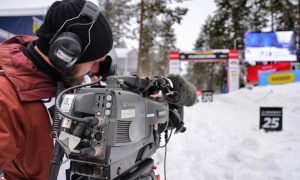
Capturing the action for WRC
In January 2019 it was also announced that commentary in Spanish would be added to WRC+ All Live, following the addition of COPEC Rally Chile to the calendar, increasing the number of rounds in Spanish-speaking countries to four.
Increasing fan base
Yet this live coverage is more than an added bonus for fans; it is a way for new viewers to get drawn into this motorsport, which can be hard to follow for the uninitiated. Ruth explains: “For the first time, fans, and new fans especially, get to see everything live at a rally. This is a big stepping stone for broadcasters and for the rally itself; with this, we’ve changed the way rally is perceived, hopefully now and forever.
“We see continuous growth of new fans on our platforms, and get lots of feedback from them. It is now possible for new fans to easily follow the rally, which isn’t like circuit sports such as Formula 1 where the first one over the line wins. Before, you needed to understand the sport to get what was happening on a race day, but now, new fans can quickly engage with the sport.”
Each rally runs over four days, beginning on a Thursday evening where competition starts in championship order through to the end of Friday. On Saturday and Sunday it works with reversed rally standings, so the rally leader goes through the stages last. After the rally leader has completed a special stage, other categories follow, including all of WRC 2 and support categories such as Junior WRC.
Added Ruth: “When you see just a few stages or read about it, it can be tricky to understand WRC, but when the whole rally is live we can explain with live commentary, give people expert information and behind the scenes facts, so even if you’re not a rally geek you really are able to understand what’s going on.”
Evolving broadcast set up
In order to show each stage throughout a rally, WRC changed its production set up last year to a TV compound in the service park alongside the manufacturer teams, with NEP. “We connect each stage with satellite and RF, bring each stage’s footage back to the service park live, where we produce the world feed,” notes Ruth. “At a rally every stage is very different; sometimes the rally cars go 100km north in the morning, then 50km south in the afternoon. To capture that in a traditional way is very difficult.”
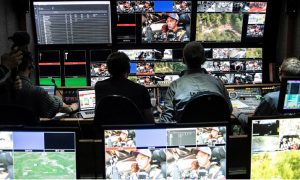
Inside the WRC OB
Adds Ruth: “Before, we had three to five hours of live on a traditional satellite distribution link to broadcasters all over the world. With the new way of All Live, that became very complicated and very expensive.”
Now, a plane flies over the stages taking feeds direct from helicopters, on-board cameras in cars, and action cameras via RF to the plane, and from the plane to the TV compound in the service park where live footage is produced.
In a multi-year roadmap for the partnership signed at the end of 2018, Tata supports WRC in bringing those feeds from the TV compound to a remote production centre in London where WRC’s editorial crews work on post production packages. Tata also delivers feeds to broadcasters; one world feed; one unilateral feed; one helicopter feed; one on-board feed; and the WRC+ All Live clean and dirty feeds.
Tata provides its Video Connect network solution to WRC, connecting some of the most challenging and remote locations of the rallies for live video delivery. This is enabled by connectivity on Tata’s next generation fibre-based network into the Tata video cloud; content is then distributed from the cloud to the rights holding broadcasters. Also, with this solution WRC+ All Live is going out to six broadcasters this season.
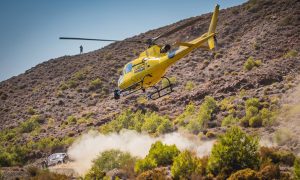
Eye in the sky
As part of the growth of WRC coverage and popularity, WRC was able to sign new TV broadcaster partnerships for the beginning of the 2019 season, including agreements in France with Canal+ Sport, and in Finland with public broadcaster YLE. Additionally, BT Sport in the UK agreed to increase television coverage of the FIA World Rally Championship in 2019, extending its partnership. BT Sport agreed a multi-year deal and has significantly stepped up its live coverage from all 14 rounds.
Next step, remote live production
Within the next two years, Tata will help WRC to remotely produce its live content as well. Comments Ruth: “Live will be produced in London as well, starting sometime in the next two years. This will be quite a big step as our service parks are in the middle of nowhere, so the real challenge is the rally environment.”
Ruth concluded: “Without changing our sport, we have adapted our broadcast set up and are now able to grow our viewership. The whole of our set up is quite unique to the challenges that rally presents. Fans expect the same quality of broadcast as you’d see on a circuit track, but our tracks are 200km away and the cars are travelling at up to 200km per hour. But if the fans expect it, we have to deliver it.”
The next WRC rally is Corsica Linea – Tour de Corse, which is on starters orders from 28 March.
